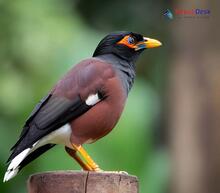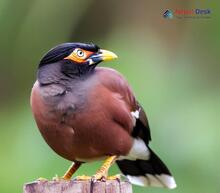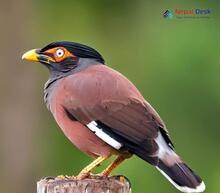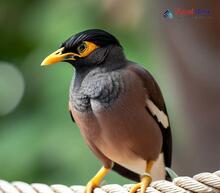Acridotheres in Nepal: Examining Their Classification, Characteristics, and Evolutionary Connections
Nepal is a country renowned for its impressive array of wildlife and beautiful natural surroundings. Among the many bird species inhabiting the nation, the Acridotheres, or starlings, are particularly captivating due to their remarkable looks and intriguing behavior. In this article, we will uncover the classification, typical features, evolutionary relationships, and nomenclature of these fascinating birds native to Nepal.
Classifying Acridotheres
Acridotheres belong to the Sturnidae family within the order Passeriformes. These perching birds are known for their strong feet and robust beaks that have adapted to a variety of habitats. They serve important functions in their ecosystems as both pollinators and seed dispersers.
Identifying Features of Acridotheres
Acridotheres possess several unique characteristics that distinguish them from other birds, such as:
1. Plumage: Their feather colors range from dark shades like black or brown to iridescent hues of green or purple depending on the specific species.
2. Body size: Generally medium-sized birds, starlings typically measure between 20-30 cm in length.
3. Beak: Equipped with robust beaks useful for extracting insects or fruits from foliage.
4. Behavior: Sociable by nature, Acridotheres tend to gather in flocks and often join multi-species groups during migration.
Tracing the Evolutionary Lineage of Acridotheres
Over time, ornithologists have extensively studied the evolutionary connections between Acridotheres and other bird families. Research suggests that Sturnidae (the family encompassing starlings) shares close ties with Oriolidae (Old World Orioles) and Mimidae (mockingbirds and thrashers). Moreover, experts have discovered significant genetic differentiation among various Acridotheres species, which has contributed to the adaptive radiation of these birds throughout Asia.
Understanding Acridotheres Nomenclature
The term "Acridotheres" originates from the Greek words "akris," meaning locust, and "thera," translating to hunt, reflecting their insectivorous diet. While many species are referred to as mynas, some Acridotheres have specific names influenced by their region of origin or distinct attributes.
Noteworthy species found in Nepal include the Common Myna (Acridotheres tristis), Bank Myna (Acridotheres ginginianus), and Jungle Myna (Acridotheres fuscus). These starlings play a vital role in preserving Nepal's fragile ecosystems through regulating agricultural pests and pollinating native plants.
To sum up, the Acridotheres genus in Nepal represents a key component of the country's diverse birdlife. By exploring their intriguing classification, shared characteristics, and evolutionary ties, we can better appreciate the significance of conserving Nepal's distinctive wildlife.




